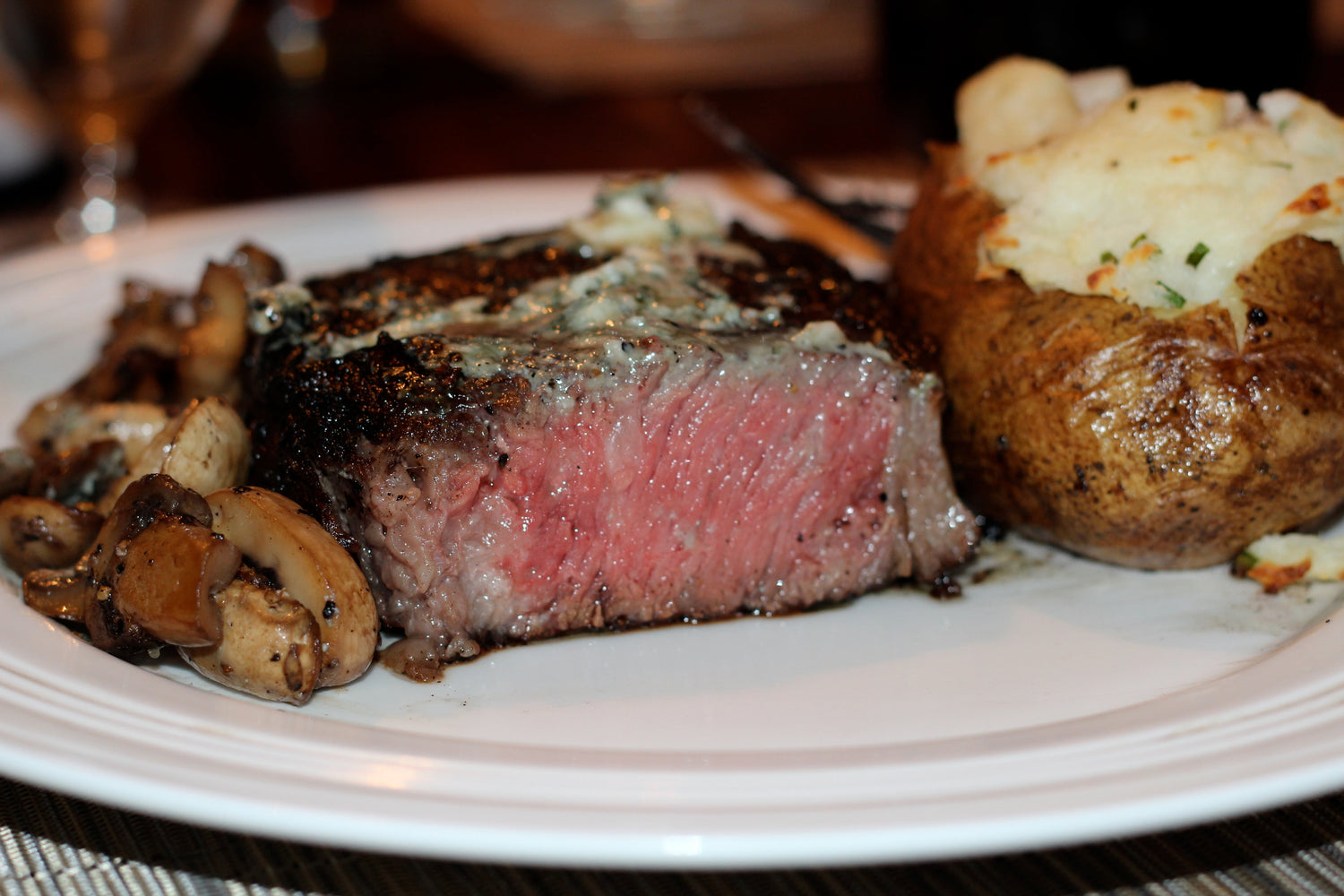Why dry age beef?
Beef is the most prized of all meats. It is the most expensive to raise and yields an incomparable taste and sensory experience when prepared correctly.
In order for beef to yield this superior eating experience it has to be aged. There are essentially two common methods of aging, namely dry aging and wet aging, or the traditional and the modern.
Wet aging is very simple: beef cuts are packed into plastic vacuum bags and held for two to six weeks. As time passes, the meat becomes tender as enzymes naturally present in the muscle break down connective tissue. The practice of wet aging is very convenient for beef packers because this process takes place during transportation to market and storage of product prior to consumption. However, the flavors and textures achieved with this method can be metallic and bloody, not remotely comparable to the texture and flavour one may achieve with dry aging of beef. Wet aging beef is akin to aging wine in a sealed bottle rather than in an oak barrel.
Dry aging is the time-tested process of maturing beef in an oxygen rich environment, allowing the meat to lose moisture in the process. The natural beef enzymes are allowed to "breathe," enabling more effective break down of connective tissue. Moisture loss intensifies and refines the beef flavor, the fat taking on a nutty, oaky flavor yielding a true artisan product. The steak cut undergoes a transformation similar to grape juice being turned into a fine wine.
How to Dry Age Beef in a restaurant or butcher shop:
There are a number of solutions offered for Dry Aging Beef in a restaurant or a steak cutting operation. Recently, several companies have begun to offer Dry Age Steak Fridge solutions. These are not anything new, since most large dry aging operations employ similar tools to address issues of sanitation, food safety, odors and mold. Often UV lights and sophisticated air filtration methods are involved. Most restaurant owners and butchers would not be interested in dealing with the capital expenditures and sanitation/food safety issues that come with using a dedicated Dry Aging Steak refrigerator.
When using UMAi Dry® for dry aging beef, every UMAi Dry® Dry Aging Bag creates a separate, protected dry aging environment for each individual beef cut. The beef cut is sealed into the dry ageing bag which allows oxygen to permeate and moisture to evaporate, thereby creating an ideal clean dry aging environment. The UMAi Dry®-bagged steak cut can then be aged in any ordinary commercial walk-in cooler without the worry of sanitation. UMAi Dry® bags have solid scientific foundation of several university studies that demonstrated their effectiveness and safety. [source]
When you consider the investment necessary to create truly artisan dry aged beef, the choice is clear.



